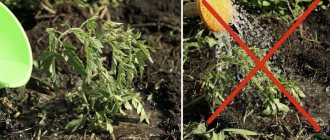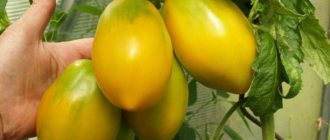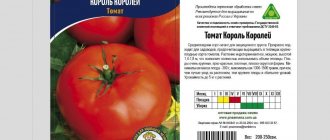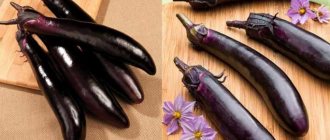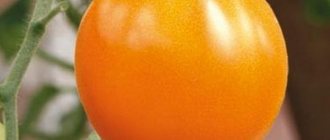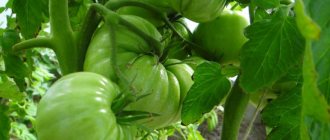Tomato variety “Golden Lemon”: video
Gardeners love the Golden Lemon tomatoes with their unusual golden color and their qualities.
Even despite some difficulties in care, summer residents continue to grow this interesting variety with pleasure. Tomato Golden Lemon
Among the new varieties of tomatoes that I grew this year, I was pleasantly surprised by Golden Lemon from Agro.
This is a variety for indoor soil; it grew in my greenhouse. The Golden Lemon has a powerful and tall bush of indeterminate type.
Golden lemon tomato bush
An early ripening tomato quickly begins to set fruits, which are collected in large complex clusters. Each brush contains 10-20 tomatoes.
Golden Lemon Brush
The fruits are very beautiful and unusual - smooth and shiny, in shape and color they resemble small lemons.
Unusual Golden Lemon Fruits
Little lemons
Funny “noses” give them a resemblance to a lemon, and the sepals are perkyly curved upward - it looks original!
Fruits with “spouts” The “Golden Lemon” tomato is productive and early, my “lemons” began to sing very first. The fruits grew weighing 60-80 grams, but the bush grew into two stems; if I had left one, the tomatoes would have been larger (the weight indicated on the package is 80-120 grams).
Golden lemon tomato fruit
More lemons
The lemons taste sweetish and pleasant. You can simply eat them off the bush, cut them for salad, or preserve them (they look beautiful in jars).
Preparation for future use Elegant, bright and unusual variety, I really liked it!
Positive and negative qualities
The Golden Lemon variety has a powerful root system, thanks to which it tolerates drought well, extracting moisture in the deep layers of the soil.
Even peaked plants reach a depth of 1.5 meters with their roots. The variety also has other remarkable qualities:
- No green spots;
- Huge vitamin reserve;
- High yield;
- The fruits remain fresh for quite a long time;
- Pleasant taste;
- Disease resistance;
- Attractive and unusual look.
The Golden Lemon tomato variety has one very remarkable feature: it can be propagated by a small number of seeds. To do this, the tops of grown plants are cut off and placed in water. After the roots have formed, the seedlings are planted in the soil. An interesting fact is that after carrying out such a procedure, tomatoes develop faster.
A disadvantage of the culture can be called its indeterminateness, since excessive height creates difficulties in care. Moreover, such a tall plant can easily be damaged by strong winds.
Other varieties:
- Cranberries in sugar
- Bulgarian wine giant
- Khokhloma
- Quickie f1
- White filling
Growing and care
Tomato golden age
You need to start sowing tomato seeds at the end of February. This period is determined by growing the crop in a greenhouse: planting at a later date will not allow the plant to fully demonstrate its potential.
Seeds can be prepared in 2 ways:
- Traditional. The grains are selected, pickled in manganese, and soaked in a stimulant. This option does not guarantee full germination, nor the absence of any disease.
- Use of new generation stimulants. Only completely healthy seeds will germinate. Material even with a damaged embryo is rejected.
After processing, the seeds are sown in the usual way. It’s better to do it in separate containers at once. It is very good for the crop if the soil is collected from your own garden bed. It is pre-frozen.
It should be noted that at temperatures below +15ºС, tomato roots will not function. Greenhouses require pre- and post-heating.
For a more powerful root system, part of the foliage is removed from the seedlings, placed horizontally, and the top is oriented to the north.
Advice! An excellent source of phosphorus is small raw fish. It is simply placed in each hole.
After planting is completed, the beds are generously mulched with a thick layer of organic matter: grass, straw, hay. For further care, systematic feeding of tomatoes will be required. When flowers begin to bloom on 2-3 clusters, the plants are treated with boric acid to stimulate the ovaries.
A golden lemon requires high-quality tying of every brush, every lash. Tomatoes need regular pruning.
As for pinching, this procedure is usually carried out before August, however, from their own experience, gardeners advise abandoning this procedure and allowing the bush to grow freely.
Features of agricultural technology
Golden tomato
“Lemon giant” has its own characteristics. The tomato is prone to fattening, so it cannot be grown using the classical technology. To get a harvest on time and of excellent quality, all points of technology must be taken into account. Features take place in:
- seedling period;
- selection of fertilizers for feeding.
Seedling period
Having purchased seeds once, you can use your planting material for years in the future, since the variety perfectly transmits genetic information.
The variety has an average ripening period and you cannot delay sowing. The best time for sowing is the beginning of March, with the obligatory soaking of the seeds. By warming up and germinating the seed, you can gain 1-1.5 weeks and get the harvest earlier.
Seed preparation
For the seed to show signs of life, it should be wrapped in a damp cloth or filter paper and placed in a plastic bag in a warm place.
After 3-4 days, signs of germination (white root) will indicate the time of sowing. Do not allow it to overgrow and cause green shoots to appear.
Soil preparation
Since growing the variety has its own characteristics, and they relate to preventing fattening of the tomato, the soil must be prepared especially carefully.
The soil mixture should be prepared as follows:
- humus of animal origin (certainly well-ripened);
- compost;
- garden soil.
Taking all the ingredients in a third of the bucket, add 1 kg of sand and 2 tbsp. spoons of superphosphate and ammonium nitrate.
It should be taken into account that the variety does not accept ammonia fertilizing; it begins to fatten. Therefore, nitrogen is applicable only during the seedling period.
The components are mixed well and kept without freezing for 2-3 weeks.
Sowing
You can sow the seeds in one tub, and then plant them in individual cups.
Sowing is carried out as follows:
- Fill the container with soil mixture and compact it;
- We spread the living seeds (sprouted) over the surface with a distance of 2 cm;
- Sprinkle with 1.5-2 cm of soil and compact;
- Water through a strainer or from a sprayer with warm water;
- Cover with plastic wrap or glass;
- We send it to a warm place.
Germination temperature is within 24-26 ᵒC.
After 5-6 days, shoots will appear.
Seedling care
As soon as the seedlings appear by 80%, we remove the shelter and move the containers with the crops to the most illuminated place. In order to prevent stretching, we lower the temperature to 14-16 ᵒC at night and two degrees higher during the day.
We water only with warm water. When watering, the soil lump should be completely moistened.
If the soil mixture is prepared correctly, the seedling period will not require additional fertilizing.
When two true leaves appear, the seedlings are picked. To do this, the lower third of the root is torn off and transplanted into individual cups.
When selecting containers for growing seedlings, you should take into account that the lemon giant tomato reviews and photos indicate a tall plant and an extensive root system should be grown during the seedling period.
The container for transplantation should be high, and it should be filled 1/3 with soil. Next, as the shoot grows, soil should be added until the pot is completely filled.
Further cultivation of seedlings consists of regular watering and ventilation. Before transplanting into open ground, the plants are hardened off. To do this, take the tubs with seedlings out into the fresh air. Initially, adaptation is carried out for 15 minutes, and then the residence time increases.
As soon as the threat of frost has passed, the plants are planted in open ground.
Transplanting into the garden
“Lemon giant” has its own characteristics. When choosing a planting site, you should not select very fatty, fertile soils to prevent the shoots from fattening.
The planting site should be protected from winds and nightshades should not be grown in the previous 3-4 years.
Having chosen a place, we dig a hole and, using the transfer method, without destroying the earthen clod, plant seedlings there.
Since the variety is tall, you should immediately take care of the supports and fixing garter of the seedlings.
Growing rules
Since the lemon giant tomato has some peculiarities, the process of growing seedlings must be approached responsibly. To get a high-quality and high yield, you must follow all recommendations for growing, replanting and further caring for tomatoes.
Read also Gerbil mushrooms photo and description
If you once purchase seeds of the Lemon Giant variety, then you can completely forget about buying seed and use seeds collected from the harvest for seedlings.
Attention! Since this variety of tomatoes is mid-season, you should not delay planting.
Planting seedlings
The first step is to wrap the planting material in a damp cloth; after a few days, seeds suitable for sowing will sprout. Fertile soil is used for seedlings; if it is not possible to prepare it yourself, you can purchase it at the store.
The soil is poured into containers, grooves are made no more than 2 cm deep and the seeds of lemon giant tomatoes are planted. It is recommended to moisten the soil in advance - the furrows made are sprinkled with water and only after that the planting material is planted.
Ideal conditions for seedling germination are temperatures ranging from +24°C to +25°C; for this, the container must be covered with cling film. When the first shoots appear, the container with seedlings is placed in a well-lit place.
Picking is carried out 2 times, which allows you to form a powerful root system. The first picking occurs at the moment when the first 2 true leaves appear, the second - 14 days later.
Transfer
You can plant tomatoes in the greenhouse in the second half of May, but you should first install supports for gartering the bushes. For every sq. m plant up to 3 tomato bushes. It is best to use places with fertile soil, this is the only way to get a high yield.
Holes are first made in the prepared beds into which the seedlings are transplanted. Since this variety is tall, it is recommended to install supports in advance to which the bushes will be tied in the future.
Aftercare
Tomatoes of the Lemon Giant variety, while growing in open ground, must be watered and fertilized in a timely manner. Since plants stop growing when the soil dries out, watering must be timely.
Often used as fertilizers:
- superphosphate;
- potassium sulfate;
- stove ash.
The first fertilizing is applied 14 days after transplanting into open ground. For 10 liters of water add 2 tbsp. l. any of the above fertilizers and 500 ml of stove ash. It is worth watering tomatoes with this solution, 0.5 liters per bush.
Characteristics of the “Golden” tomato
World Championship - “Golden Tiger-12” (squat, deadlift): sq raw pro
The variety is a mid-early variety, its ripening period ranges from 90 to 100 days. The bushes reach a height of 70-75 cm, the variety is determinate. The leaves are standard size and dark green in color. The bushes require gartering and pinching.
Tomato fruits have a characteristic golden-lemon color, which corresponds to its name. The fruit is quite large in size, the weight of one tomato ranges from 100 to 200 g. The fruits are rich in plant sugars, vitamins, and fiber. The pulp of the fruit is quite dense, juicy, fleshy, and has a pronounced tomato, but at the same time slightly sweetish taste. If you follow the rules of care, you can harvest about 10 kg of tomatoes from 1 square meter. m.
The variety was included in the state register of vegetable varieties of the Russian Federation back in 2008; it is suitable for cultivation both in open and closed ground, which is why it is grown in almost all regions of Russia. It is positioned primarily as a salad variety, but is suitable for preparing other culinary dishes, goes well with juice, and also for canning. The variety is hypoallergenic.
Description of the tomato variety Golden Koenigsberg
The Golden Koenigsberg tomato is a mid-season and very productive variety. The plant is indeterminate, bush height 150-180 cm.
Features of cultivation
- Seeds are sown 60-65 days before transplanting to a permanent location.
- Planted in greenhouses and open ground.
- To increase productivity, the bush is formed into 1-2 stems.
Golden Koenigsberg
Harvest characteristics
- The weight of one tomato is 300-450 g. 5-6 pieces ripen in one bunch.
- The pulp is dense with a rich tomato flavor.
- Tomatoes are very tasty in fresh salads and good for canning.
Advantages
- Good fruit set, even in cool summers.
- High caratine content.
- Suitable for dietary purposes.
Productivity
The yield of early-ripening tomatoes is enormous - about 12 kg of fruit is harvested from each bush. When tomatoes ripen, they are taken out of the greenhouse in buckets.
{reklama}If you take into account the recommendations and plant 3 seedlings per 1 m², and make efforts to provide decent care, then the breeders promise up to 50 kg of tomatoes from the specified area.
Golden lemon can be cultivated in greenhouse conditions in any climate zone. Tomatoes are grown outdoors in the Krasnodar region, the Caucasus republics and some southern regions.
peppers and tomatoes
Elena Akentyeva
Experience is the best source of getting answers to your own questions. If you want to plant tall tomatoes, please, but listen to the advice and at the same time plant low-growing ones; the same applies to peppers. Then you will draw conclusions. Personally, I think that growing vegetables indoors is just a waste of time; the harvest is low (if the fruits set and ripen at all), and the taste leaves much to be desired.
Lina Sakharnova
The lemon vine will not grow well, but try it - maybe if you create a condition and pollinate it by hand, something will work out! It is better to plant hybrids from tall ones, but only those that have been tested without pollination by bumblebees! And from the low ones there are special ones. varieties for window sills. For peppers, look for bouquet or bush peppers. There are many varieties, but only small peppers are good on the windowsill, with the correct formation, soil, fertilizing, temperature and lighting. Good luck!
BERGENIA
Tomatoes require a very large volume of soil, about a bucket per bush. And the necessary lighting is very difficult to provide. In the summer, this is still possible, but now it’s not worth taking on.
Vladimir Babin
I don’t know how, but I’ve been growing this “dirt” for 5 years in my apartment, on the insulated loggia (heated) I take the low-growing “button” variety, so for the New Year we already eat our own salad of fresh tomatoes. The harvest is certainly not as plentiful as in the summer, but it is its own.
Emerald pear
Photo by Lyudmila Komashko
Photo by Slava Stepanov
Photo by Galina Vergasova
Photo by Zoya Prikhodko
Another variety with emerald-colored fruits is in 6th place on the list - this is the Emerald Pear. Its fruits, like those of the previous participant in the list, remain green even after full ripening - the only difference is in shape. The variety got its name due to the resemblance of the fruit to a pear. They are small, maximum weight - 100-170 g. At the maturity stage they become darker than at the ripening stage. This is one of the signs by which you can determine whether a tomato is ripe. Another one is softness: at the end of the growing season, the fruits become softer. They are juicy, sweet, with a light fruity taste. Unlike many green-fruited fellows, the Emerald Pear stores well.
The variety is indeterminate, the bushes reach 2 m in height, so it is more convenient to grow them in a greenhouse. They need support and regular garters. It should be formed into 2 stems. Tomatoes of this variety are little susceptible to diseases.
Biography and plot
Cipollino After a meeting with a prisoner relative, the boy realized that only innocent people were in prison, and also received instructions from his father to “walk around the world,” gain experience, see how people live
During the trip, Cipollone told his son to pay special attention to the scammers in power
Lukovka went on a hike across the endless country, seeing along the way the poverty and lawlessness of his compatriots. Poor godfather Pumpkin
onit Senor Tomato from a small house, which occupied a piece of the master's land, godfather Blueberry makes ends meet, having only halves of scissors, thread and a needle from everything he has acquired, the peasants are starving, sending carts with food to the palace of the countesses of Vishen, in addition, they pay for air and are trying to learn to breathe less. Cherries are going to establish another tax - on precipitation.
Cipollino and Signor Tomato
But Cipollino, having enlisted the support of friends, including Besolinka, Professor Grusha, Master Vinogradinka and others, decides to help the people. A struggle against injustice ensues, which ends in complete victory: the flag of Freedom proudly flutters on the castle tower, and the building itself has turned into a palace for children, equipped with a cinema hall, rooms for games and drawing, and a puppet theater.
The tale of class struggle has a dynamic plot and a whole range of wonderful images. Positive and negative characters from the plant world show the relationships between people of different classes. Rodari managed to convey complex things in simple language, giving the work a unique artistic style.
Features of cultivation and care
Experts advise in most regions of Russia, where the summer is short and there are often return frosts in the spring, to grow this vegetable plant in seedlings.
Usually, planting seed material at home is carried out from the second ten days of March to the second ten days of April.
Important! The bushes form no more than 3 stems, and no more than 3 plants are planted on one square so that they do not interfere with each other’s growth and ripening of the crop.
Further planting care includes:
- regular watering every 2-3 days, pouring a bucket of warm water under each bush;
- after watering, loosen the soil around the bushes and add mulch (straw or hay). The thickness of such a layer should be at least 10-12 cm;
- Fertilizing is carried out every two weeks, alternating organic matter (mullein solution or bird droppings) and complex mineral fertilizers.
In order to have time to ripen all the fruits, you need to pick the tomatoes as they ripen.
Characteristics of the variety
If we consider the characteristics of the Lemon Giant tomato variety, it is worth noting:
- refers to mid-season varieties;
- ripening time from the moment of first shoots is 115 days;
- from 1 sq. m you can harvest up to 6.5 kg of crop;
- lemon-colored fruits;
- The tomato skin is dense and does not crack during ripening;
- in a tomato the number of nests can exceed 4;
- has excellent taste;
- tomatoes can be used to make salads and juices;
- the bush can reach a height of up to 2.5 m;
- the leaves are medium in size and green in color;
- need support, as the bush can break under the weight of the fruit;
- the level of resistance to diseases and pests is quite high;
- can be grown in open ground conditions in all regions of Russia.
It is thanks to these characteristics that many gardeners prefer to grow Giant lemon tomatoes on their plots.
Productivity and fruiting
Tomatoes can be harvested 115-120 days after the first shoots germinate. As practice shows, the yield, compared to other popular varieties of tomatoes, is small, but this disadvantage can be easily compensated for by the taste of the finished product. To obtain high yields, it is necessary to timely care for tomatoes, apply fertilizers, and water.
Area of application of fruits
The Lemon Giant variety is excellent for preparing fresh vegetable salads; in addition, it is used for soups, hot dishes, tomato sauces and purees. Since tomatoes are quite large in size, it is problematic to use them whole for preservation. If you can preserve salads with chopped vegetables, then tomatoes are ideal for this purpose. If necessary, you can boil tomato juices.
Resistance to diseases and pests
Due to their characteristics, the Giant Lemon variety tomatoes are resistant to diseases and pests. Many experienced gardeners note that you can get a good harvest of tomatoes in any case, regardless of weather conditions, which is also a very important factor.
Despite this, we should not forget about preventive measures, thanks to which we can prevent the occurrence of certain diseases and at the same time increase productivity.
Advantages and disadvantages of the variety
If we consider the reviews of gardeners who have already been lucky enough to grow Giant lemon tomatoes on their plots, then based on the data obtained, we can highlight a number of advantages that are characteristic of the variety. This may include:
- the fruits grow large in size, have a pleasant taste and aroma;
- if you take care of tomatoes, the yield will be high;
- the crop can be transported over long distances and stored for a long time;
- With proper attention, plants are practically not exposed to diseases and pests.
Despite all the advantages of tomatoes, we should not forget about a number of disadvantages, which, most likely, can be attributed to the features of this variety:
- Tall tomatoes are quite demanding when it comes to watering: they are sensitive to the quality and quantity of water. To get a high yield, the watering process must be competent;
- the Lemon Giant variety exhibits its qualities to the full only if adequate feeding is provided;
- the soil must be fertile, otherwise you should not count on high yields and quality of ripe fruits. Small tomatoes grow on poor lands.
Many gardeners believe that the existing disadvantages of tomatoes are just standard requirements that apply to elite varieties of tomatoes.
Important! Getting a good harvest will require some effort.
Pest and disease control
Lemon Giant tomatoes are famous for their resistance to many viral and fungal diseases. For preventive purposes, it is recommended to calcinate the soil before planting.
If you plan to plant tomatoes in a greenhouse, then you should water the ground with a solution containing manganese or copper sulfate. This procedure will destroy harmful insect larvae and bacteria.
You can also periodically resort to spraying the bushes with a weak solution of potassium permanganate. To combat insects, insecticides are used, which must be applied before the tomatoes begin to bloom. In addition, plantings can be sprayed with herbal infusions, adding celandine, chamomile and yarrow.
Advice! To obtain a high yield, it is necessary to apply fertilizing in a timely manner and observe the temperature regime in the process of growing Lemon Giant tomatoes.
Characteristics of the variety
Vegetative form
The variety is indeterminate. The height of the plant reaches 180, or even 200 cm. The plant is powerful, overfed and requires timely and regular tying and removal of shoots.
The leaf is medium in size, classic, green.
The first inflorescence appears above the 7-9 leaves, the next ones are formed after 3.
Fetus
The shape of the “Lemon Giant” is flat-round. The ribbing is average and is expressed on all fruits without exception.
The section clearly shows four nests filled with pulp and a small amount of seeds.
The tomato is moderately dense, the skin is smooth with a slight shine.
The originators indicate the average weight in the range of 350-380 g, but vegetable growers who have been growing the giant for a long time, sharing their impressions, talk about a weight of up to 700 g.
Tomato goes well in cold appetizers and salads. Vegetable cutting of their tomato has an impeccable appearance, since the pulp holds its shape well even when cut into segments.
Tasters, assessing the taste properties, rated it “good”, but the opinion of vegetable growers was divided into those who were delighted with the taste and those who did not find much taste.
The fruit is suitable for fresh use. This recommendation is given not only because the tomato is very large and will not fit into a jar, but also because heat treatment immediately turns the pulp into puree.
Features of ripening
At the beginning of ripening, tomatoes are green in color with a pronounced dark, rich green spot at the stalk. As the fruits ripen, they gradually turn yellow, the stain resolves, and the tomato acquires a lemon-yellow color.
A tomato bunch bears 3-4 fruits. Their growth occurs almost simultaneously, as well as ripening.
The variety has peculiarities in agricultural technology; if not followed, the plant increases the vegetative mass to the detriment of the ovary.
Productivity
The registration commission legalized the variety's marketable output in the range of 6.1-6.7 kg per square meter of garden.
Vegetable growers who have tried the variety in their beds fully confirm these figures.
The yield of tomato is not high, but its taste properties compensate for the deficiency.
Characteristics and description of the variety with photos
Tomato Lemon Liana (Wonder of the World) belongs to the indeterminate type and is a standard variety.
Indeterminate type of tomatoes - what does this concept mean? Everything is very simple - the shoots of such tomatoes can grow to an unlimited size in height throughout the growing season. If such vegetable crops are grown in suitable conditions, then the height of the central shoot can reach 3.5-4.0 m. If the weather conditions are not very suitable, then the growth of the bushes stops at 1.6-2.0 m.
In such vegetable crops, the vegetative mass grows throughout the season. And if in varieties of other types the central shoot ends with the appearance of a brush with flowers, then in indeterminate tomatoes foliage grows at the top. Therefore, experienced vegetable growers recommend pinching the tops of such bushes when the shoots reach the desired height.
Photo of tomato on a bush
The Lemon Liana variety reaches a height of 3.5 m, branches well, and the shoots are of a climbing type. The stems are medium-leaved, the foliage is typically tomato, dark emerald. Since the stems are too tall, they must be tied up and supported so that the shoots do not break off under the weight of the ripening crop.
The weight of ripe fruits is 70-85 g, the pulp is dense and quite fleshy. The peel is characterized by increased density, is not prone to cracking even during heat treatment, and its color is bright yellow. The shape of ripe fruits is oval, slightly elongated, the tip is elongated like a lemon fruit. The taste is sweet with a characteristic sourness.
The fruits have 3-4 seed chambers. The presentation of ripe tomatoes is excellent; the harvested crop can be transported over long distances without losing its excellent appearance and taste. The shelf life of the harvested crop is quite high if it is stored in a cool, dark place.
The harvest ripens gradually over several weeks. The first ripening fruits are larger than those that ripen later.
The collected fruits are universal, they can be used fresh, in salads, and also for preservation. They can be salted, pickled, and they have an excellent taste even in pickled or salted form. The skin remains dense and does not crack.
The Lemon Liana tomato is high-yielding and is characterized by increased resistance to most diseases that usually affect any vegetable crops of the nightshade family, including late blight and various types of rot.
Also, the bushes of these tomatoes are practically not affected by insect pests.
Another good quality of these bushes is their resistance to heat and not too long periods of drought. In such weather conditions, the shoots do not slow down their growth, the ovaries are actively formed, do not fall off, and the fruits develop normally.
Reviews from gardeners
Avtoru4ka, Tambov
Every season I try to buy a new variety to try. This time I bought Golden Lemon. The advertisement, of course, promised a lot, but I didn’t believe it. But in vain! This time everything turned out to be true. The brush contained 2 dozen golden lemons: shiny, strong, sweet. Each bush had 4-5 such brushes. The thick stem could not bear the heavy weight of the fruit - I did not tie it up carefully, I thought that advertising was advertising. Elegant tomatoes brought life to salads and preserves. Even collected, they are stored for a long time. What I liked is that bitterness does not appear from storage, like red ones. I collect the seeds myself and even give them to my friends. This is not a hybrid, so I have no problems with planting material.
Natalya, Kamyshin
I have already seen more than once how resistant this variety is to various diseases. In addition, once picked, the fruits can be stored for some time and transported over long distances. So it's worth growing these tomatoes, although they do require some attention.
Features of cultivation, planting and care
Sowing the seeds of this variety of tomatoes for seedlings is carried out 60-65 days before the intended planting in the ground. Seedlings dive at the stage of two or three true leaves. When planting seedlings on a permanent site, it is recommended for 1 sq. meter place up to 3 plants.
This is a natural variety of tomato. Therefore, we recommend taking seeds from a ripe fruit and using them for planting in subsequent seasons.
If you grew Golden Drop tomatoes, please write whether you liked them or not. What was the yield and taste of the fruits in your climatic conditions? Briefly describe the advantages and disadvantages of this tomato in your opinion. If possible, attach a photo of the entire bush or individual fruits you grew to your comment. Thank you!
Your reviews of the Golden Drop tomato and additions to the description will help many gardeners evaluate this variety more objectively and decide whether it is worth planting or not.
Dates for planting seedlings and planting in the ground
Seedlings are planted in April or early May, this is 65-70 days before transferring to a permanent place. Seeds are disinfected with a weak solution of potassium permanganate, soaked for 5-6 hours in Epin solution, then transferred to a damp sponge or cloth for germination. Then they are planted in boxes 5-6 cm high with drainage holes to a depth of 1.5 cm and covered with film. The soil should include: garden turf, peat, sand, humus, each at least 10% of the total composition.
The variety has good germination. After germination, the containers are placed under a fluorescent lamp for 5-7 days or taken out to a cool room at night. The sprouts are watered with warm, settled water every 5 days. They dive when the second true leaf appears immediately on the garden bed.
The planting site is prepared in advance: 200 g of vermicompost, a handful of humus and 1 tbsp are added to each plant. l. wood ash. The holes are made 15 cm deep and watered abundantly. Then the bushes are planted and mulched with mowed grass. After planting, the seedlings can be watered 1-2 more times.
They can also be planted using the seedless method; in this case, the seeds are sown already in early May in beds under film.
The main stages of growing seedlings at home
Seed preparation Basic methods of preparation: heating, disinfection, soaking in growth stimulants, bubbling, hardening, germination. These techniques aim for different results and have different purposes. More details
Soaking seeds According to experts, pre-soaking can increase yield by 30%. The duration of soaking is determined depending on the solution used and the quality of the seeds. More details
What soil to choose for seedlings The soil for planting tomato seeds at home should not be taken from the garden. The soil for tomato seedlings must have good breathability, provide the required level of humidity, and the acidity level pH should be about 6.5 units. More details
Diseases and pests
The Golden Stream tomato variety has good immunity. Almost never gets sick. The main pest is the Colorado potato beetle. When it appears, the plants are treated with any insecticide according to the instructions for the drug.
The variety is very productive. The fruits of the Golden Stream tomato fall down the bush like a tomato cascade. The new product has proven itself well and has a chance to become a tomato classic.
And in the table below you will find links to articles about tomatoes of various ripening periods that may be useful to you:
| Super early | Mid-season | Mid-early |
| White filling | Black Moor | Khlynovsky F1 |
| Moscow stars | Tsar Peter | One hundred poods |
| Room surprise | Alpatieva 905 a | Orange Giant |
| Aurora F1 | Favorite F1 | Sugar Giant |
| Severenok F1 | La La Fa F1 | Rosaliza F1 |
| Katyusha | Right size | Em Champion |
| Labrador | Dimensionless | Sultan F1 |
Irish liqueur
Photo by Lyudmila Komashko
Photo by Lyudmila Komashko
Photo by Svetlana Mikhnevich
Photo by Svetlana Mikhnevich
Second place goes to the Irish liqueur variety. An indeterminate variety of mid-early ripening, intended for cultivation in greenhouses. You can plant no more than 2-3 bushes per 1 sq.m. It is recommended to grow in 2 stems. Mandatory procedures include pinching, tying to a support, pinching over the 14th or 15th leaf and weekly watering. And don’t forget about complex mineral fertilizers - the tomato will thank you.
The dull green fruits (as they ripen, they change color to yellow-green with small stripes) are distinguished by their fleshy pulp and high sugar content. Their weight can reach 200-250 g.

